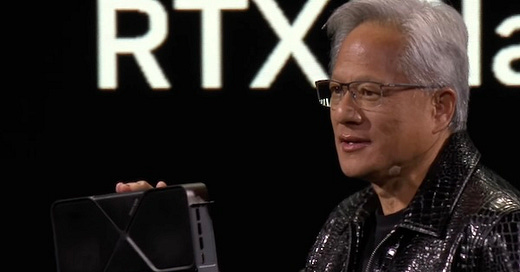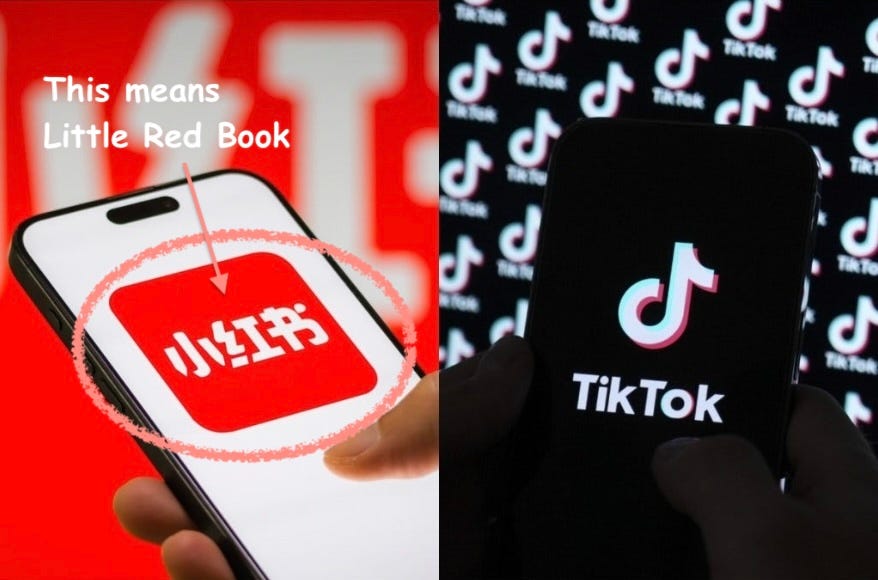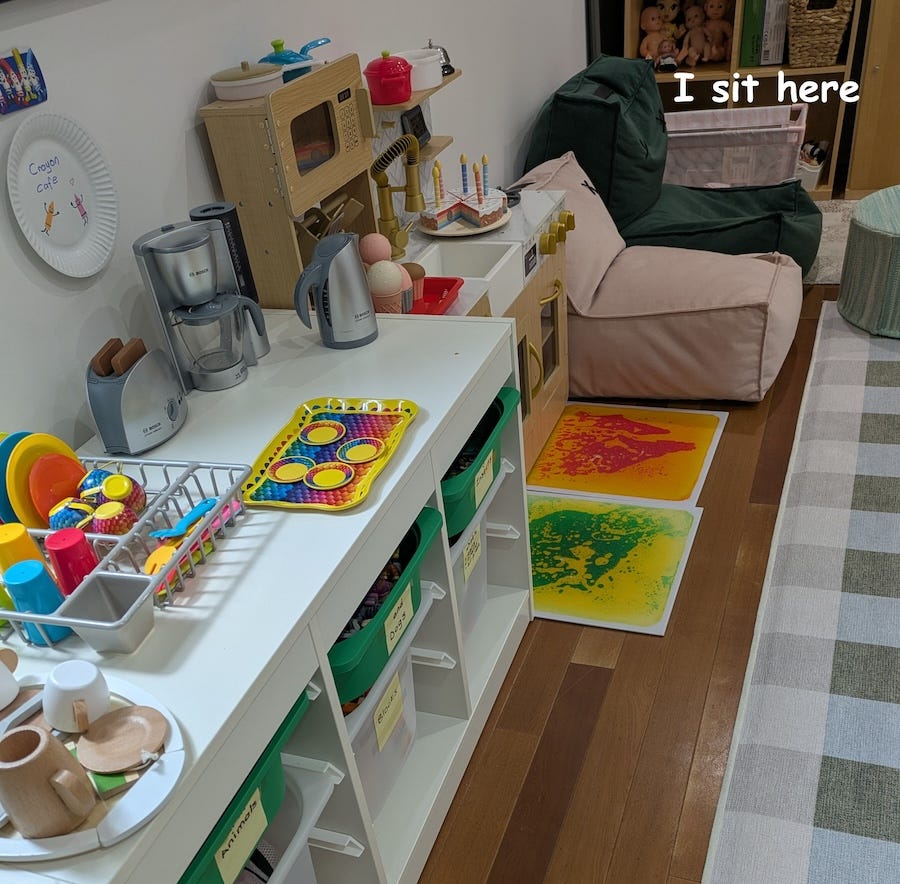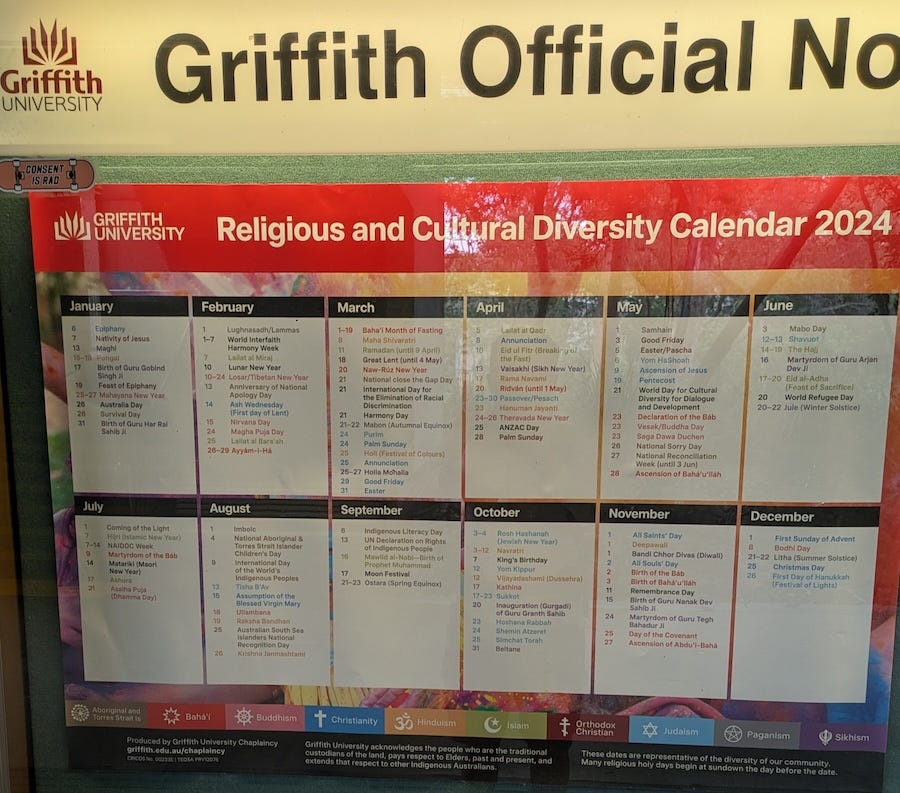Waiting for the AGI !?
After my last post, a friend of mine told me that by the time I learn enough Maths to do anything useful, the AGI would be here so he said why bother
If you like what you read, copy and share the link, post it on another platform.
Please also subscribe to make sure you will not miss future posts. Subscription is free. Your email will not be used for other purposes. You will receive no advertisements.
You will also find short takes on
The new tiny PC with super powers that NVIDIA is selling at a loss
TikTok Refugees or The Challenge of Censoring People’s Choices in Open Societies
YouTube selection
More on my Diary Notes including the fourth largest export item for Australia
My notes on Murakami's latest book: The City and Its Uncertain Walls
My notes on Hollinghurst's 2004 Man Booker Prize winner, The Line of Beauty
Istanbul - Brisbane price comparison, the trend since July 2024
And of course the latest antics of Pascal and Hagi.
-+-+-+-+
My last post concluded:
AI companies are unlikely to create the tools I need.
If I want to build those tools myself, I need more maths.
With that in mind, I began a learning journey, starting with Linear Algebra.
A friend, but, advised me not to bother. Why? He learned from a YouTube video that Artificial General Intelligence (AGI) was arriving soon.
What is AGI and when does it get here?
There’s no standard definition, but to me, AGI would be a computer program that can reason and communicate as well as me and probably better. It would:
Communicate not just through text but also via images and videos.
Understand what it knows and what it does not.
Learn and adapt independently.
This aligns with the Ben Goertzel definition: AGI is a system capable of autonomously acquiring knowledge and skills across a wide range of domains.
Will AGI be here by the end of 2025? I’m highly skeptical.
Large Language Models (LLMs), no matter how advanced, won’t achieve AGI on their own. And, no one yet has a clearer path to get there.
That said, something transformative will likely emerge in 2025—but it won’t be AGI.
What Will Happen in 2025?
I believe 2025 will mark the rise of the first commercial Large Language Model (LLM) applications that generate serious money. These will be “agentic” AI systems, powered by specialized “agents.”
What Are Agents?
Agents are preprogrammed tools that an LLM can execute based on the query. With different agents, an LLM can address diverse queries effectively. However, this setup isn’t AGI, as it cannot autonomously learn new domains—it relies entirely on human-designed agents.
Implications for Users
In 2025, we’re likely to see company chatbots with the authority and capability to resolve customer issues independently, without human intervention. For example:
• Banking: Imagine calling your bank about a disputed credit card charge. The first voice you hear will not just log your complaint but resolve the issue on the spot using specialized Transaction Dispute Management software that accesses the bank’s records. Banks are already testing such tools internally, and by 2025, they will interact directly with customers.
• Retail: If you want to buy a refrigerator, you could call a retailer or visit their website. An AI assistant will handle your questions about prices, technical specs, and comparisons with other brands—and even complete your order in the same session. These Customer Support AI Agents will replace human operators, offering 24/7 service.
I know we started talking about these possibilities two years ago when ChatGPT just came out. I think their time has finally come. The technology was not sufficiently developed two years ago.
The Misuse of the Term “AGI”
While exciting, these advancements are not AGI. They are highly specialized and they cannot independently learn or adapt beyond their preprogrammed scope.
However, I am sure some companies will still label these products as AGI for marketing purposes. This will require sttretching the definition if AGI. We are already witnessing this. For instance, OpenAI and Microsoft have already redefined AGI as an AI system capable of generating $100 billion in profits, sidestepping technical definitions. So, when you hear promises of AGI arriving soon, consider the speaker’s definition of the term.
What Do I Want?
I aim to create an AI teacher that can chat with university students and:
1. Answer their questions.
2. Test, assess, and grade their knowledge.
The second function is critical. If we can trust the AI in this role, it opens the door to a hybrid assessment structure:
• 40% Continuous Assessment: Weekly AI-student interactions are graded and contribute to the final score.
• 60% Final Exam: Students take a supervised, in-person exam, with ID verification by invigilators.
For now, let’s focus on the first mode: answering and interacting.
Challenges of AI Teaching in Specific Domains
Some subjects, like Linear Algebra, have universal content across institutions. Current LLMs handle such topics well. For instance, I’m studying Advanced Linear Algebra through the University of Texas - Austin on edX and often use ChatGPT to discuss parts that I find difficult to understand. Linear Algebra principles are consistent worldwide, so the AI performs competently, even without specific subject training.
However, other subjects vary significantly by region due to national standards. For example, the design of mechanical steel structures:
• In the U.S., designs must comply with API standards.
• In Europe, Eurocode 305 applies.
• In Australia, the former standard AS1250 was updated to AS4100 two decades ago.
Similar variations exist for machine components like gears, shafts, and splines. These differences encompass material designations, formulas, and standard dimensions, represented in region-specific charts and tables. An AI teacher for a Machine Design course in Australia must adhere to Australian standards to be effective.
Early Experiments with AI in Machine Design
Initially, I thought using ChatGPT for Machine Design would be straightforward with Retrieval-Augmented Generation (RAG). My plan was to upload texts of the Australian standards and have the AI answer queries based solely on them. However, this proved more challenging than expected:
1. Locating the relevant section in the documents was often too difficult.
2. When the correct section was identified, the AI typically answered accurately, though I didn’t test this comprehensively.
The fundamental issue is the cost and complexity of customizing LLMs for specific subjects. Ideally, I want a solution where I provide a simple text file of subject-specific information, and the LLM uses only that data—even if it contradicts their prior training.
The Core Limitation of LLMs
Currently, LLMs don’t “know what they know.” They generate statistically probable answers without recognizing gaps in their knowledge. This makes it impossible for them to accurately assess a student’s understanding.
Workarounds exist, such as developing specialized software agents to guide the LLM. However, these are expensive and require custom agents for every course. For simpler topics, like high school curricula, fine-tuning might be more affordable. Platforms like Khan Academy may already use such approaches, though it likely required years of development.
A Vision for the Future
If we can develop an AI tutor with these capabilities, it would rival or surpass the expertise of an engineering graduate. Such a system could even be employed by engineering firms. However, my primary interest lies in education.
-+-+-+-+
Short Takes
NVIDIA Local AI Server: Project Digits
NVIDIA revolutionized PC graphics in the 1990s with their fast and powerful graphics cards, ideal for gaming. In 2006, they introduced CUDA (Compute Unified Device Architecture), for using these cards to develop machine learning and eventually AI applications. This innovation positioned NVIDIA’s hardware as the go-to platform for training Large Language Models (LLMs). Today, AI giants like OpenAI, Google, Meta, Microsoft, and Amazon rely on NVIDIA GPUs for their AI servers. The result? NVIDIA’s stock price soared from $10 to $150 in just four years.
Last week, the NVIDIA CEO Jensen Huang unveiled a compact PC designed specifically to run NVIDIA’s entire AI software suite. Dubbed Project DIGITS (Deep Learning GPU Training System), this machine was showcased during Huang’s CES presentation.
At $3,000, the PC is expensive by personal computer standards but remarkably affordable as an AI server. It can handle quite large models with up to 405 billion parameters when two units are connected. However, running your own LLM server (like for ChatGPT) does not make sense to me given the efficiency of cloud-based solutions. Hence, I believe this PC is likely targeting a different market: robotics AI.
For instance, imagine a restaurant using robot waiters. Controlling them via cloud servers would be too slow, but an NVIDIA computer on-site could handle the task seamlessly. If this bet pays off, NVIDIA might be dominating the robotics AI market as well.
In any case, these affordable machines present an exciting opportunity for mechanical and mechatronic engineering departments. I can see them being used to advance research and train students in AI robotics, bringing cutting-edge technology into the classroom and preparing the next generation of engineers.
TikTok Refugees
With the U.S. Supreme Court likely to approve a TikTok shutdown, many American TikTok users are reportedly migrating to another Chinese app, RedNote (the westernised name of China’s popular “Little Red Book”).
This surge of interest has left the app’s developers uneasy. Chinese social media platforms with foreign user bases are subject to heightened scrutiny in China. With 300 million users domestically, the company had no plans to expand internationally and claims to have been caught off guard by the influx of U.S. users.
However, the truth of this migration story remains uncertain as no solid user data has been released. If the 170 million U.S. TikTok users were to genuinely shift to RedNote, it would highlight two features of the age we are living in:
The Challenge of Censoring People’s Choices in Open Societies: The ability of users to simply migrate to another platform shows how difficult it is to control people’s choices in a supposedly free society like the United States.
China’s Emerging Cultural Influence: As China grows as a global power, it will also inadvertently become a cultural powerhouse. This could lead to societal changes within China itself, potentially in ways the country is unprepared for.
The situation is still unfolding, but it raises compelling questions about the interplay of technology, culture, and geopolitics in the ROGUE age.
Stinky King Durian
Years ago, I was an external examiner at a Malaysian university. This involved working alongside academics from around the world. During one visit, a local colleague brought a crate of unusual fruit—durians. They resembled large watermelons but with a prickly, light-green shell, similar to a custard apple. Using a cleaver, he sliced them open, revealing yellow flesh with an incredibly sharp and pungent odor.
How to describe it? Imagine the sweet scent of a very overripe rockmelon, amplified twentyfold. That’s how durian smells—a combination some find intoxicating, while others find repellent.
Our host enthusiastically explained that eating durian would “increase your temperature” and “overheat” you. We took this as a euphemism for enhancing sexual potency—a belief he seemed to take seriously. This reputation likely explains why the durian is revered as the King of Fruits in East Asia.
Last week, I read that China has embraced durian with gusto, importing tonnes from Southeast Asia, particularly Malaysia and Thailand. This demand has driven prices sky-high. In Thailand, a durian that cost $2.30 four years ago now sells for $8.60. In China, it’s a delicacy featured in upscale outlets, as shown in the following image:
Occasionally, I see durians in Brisbane markets but I have never come across it in Istanbul.
YouTube
I had planned to write about Meta’s decision to replace in-house censorship with a Community Notes feature, similar to what Musk introduced on X. Then I came across this video by Dr. SH and found myself agreeing with most of her points..
While the title suggests Community Notes might be a bad idea, Dr. SH’s argument is more nuanced. She believes the system may work well in 2025 but worries it could be vulnerable to manipulation in the future.
As someone who has been a Community Notetaker on X since its inception, I can say it works quite well—at least for now..
Diary
Crayon Cafe
The following shows the Crayon Cafe.
I sit in my green beanbag chair in the far corner and the proprietor Eleanor brings me black coffee, a slice of toast, and a slice of cake using plates and cutlery in my favourite colour (red). She does not let me touch “the food” until she places the plate and the cutlery in the right order. This is all what she picks up from watching the servers at the “Supernumerary Cafe” her mum and dad take her.
Religious and Cultural Sensitivities
The fourth largest export for Australia after coal, iron ore and natural gas is education, which brought in $52 billions in 2023-24. This income comes from foreign students who attend Australian schools and universities and pay for their education.
Griffith University, located near where I live, often features on my Toohey Forest walks. The other day, while passing through its campus, I noticed an interesting display on one of the walls:
When a university hosts fee-paying students from diverse nationalities and religions, it’s understandable that they strive to acknowledge important days for their international students—even if it’s just a wall notice. Accommodating such diversity in the academic calendar may not be feasible, but small gestures like this probably count.
-+-+-+-+
Pascal Hagi
A short evening chat with Pascal. Hagi, the timid one, is watching from the back.
-+-+-+-+
What I Read
Haruki Murakami, The City and Its Uncertain Walls
I enjoy reading Murakami, and this book did not disappoint. The story is simple yet captivating: a boy falls for a girl, the girl disappears, and the boy is unable to forget her. Later in life, there’s a glimmer of hope to recapture the dreams of the youth. But as the saying goes, you can never swim in the same river twice.
As is typical with Murakami, the narrative features jazz, cats, and enigmatic, magical circumstances. The ending, while leaving some loose ends (as usual for Murakami), felt more conclusive than in some of his other works. For me, it was a satisfying closure.
Murakami’s books are like Rorschach tests, offering different takeaways for each reader. One poignant message I found in this book was how life changes abruptly as we grow up. While most people adapt, some are cursed to spend their lives trying to recreate the experiences of their youth. In such cases, the “real” you might exist only in your mind, while the person navigating daily life becomes a mere shadow. The trouble is, if the shadow and the self cannot coexist for too long, they may wither and die.
The book is divided into three parts. The first part, while beautifully written, dragged on a little too long, and I found myself growing bored toward its end. Interestingly, Murakami mentions that his original plan was for the first section to be the entire book. However, he realized it felt incomplete and decided to continue—and I’m glad he did.
The translator provides interesting insights into the challenges of rendering the story from Japanese to English. For instance, in Japanese, the word for “I” differs depending on whether the speaker is young or old. This could have caused confusion in a book where the narrative alternates between a younger and older narrator. However, the context made it clear, and I suspect the translator’s subtle skill played a role in ensuring this.
The Line of Beauty, Alan Hollinghurst
I originally intended to buy Hollinghurst’s latest book, Our Evenings, but accidentally purchased The Line of Beauty. I considered canceling the order but decided to keep it after noticing that it won the 2004 Man Booker Prize.
As it turned out, I couldn’t finish the book. While it is beautifully written and set during an interesting period in Britain—the Thatcher era—I struggled to connect with the story. The narrative revolves around Nick Guest, a young man living as a tenant in a posh house owned by the parents of his Oxford friend.
Nick is gay and begins the novel as a 21-year-old virgin. The plot largely follows his sexual exploration, but unfortunately, that alone wasn’t enough to sustain my interest. Sebastian Faulks, in the 2015 introduction to my Kindle edition, describes the book as “a comic novel about mostly shallow people, but it has a far greater weight than that description suggests.” Perhaps I failed to feel that weight.
From Faulks’ introduction, I learned that in the second half of the novel Nick’s friends start dying of AIDS. Faulks writes: “At first you think, with some relief, that the disease is not going to feature; then small references are placed like leitmotifs at intervals; and finally, as the theme is taken up by the full orchestra, you see that it has been there all along.”
I did not finish the book but I read enough to recognise and appreciate Hollinghurst’s craft. I might come back to him and read another book by him, possibly his latest, which was my first target anyway.
-+-+-+-+
Comparing Istanbul and Brisbane prices - AT index
Based on my basket of goods, Australia is 32% more expensive this week compared to Istanbul. Both Coles (AU) and Migros (TR) prices are expressed in Turkish liras for the items in the basket on 17 January 2025. I converted Coles prices to Turkish liras at the exchange rate of 1AUD=22.06 TRY.
The y-axis in the following chart is
The trend (the red dotted line) is rising, which means that, since 5 July 2024, the Turkish prices are slowly approaching the Australian prices. Some items, e.g. beef mince, is more expensive than in Brisbane and has been consistently so since I started this chart.
The code to create the above tables and the plot is in my github repository and can be downloaded if you are interested.










